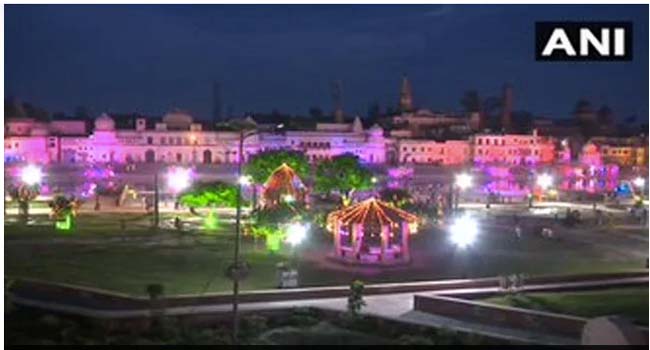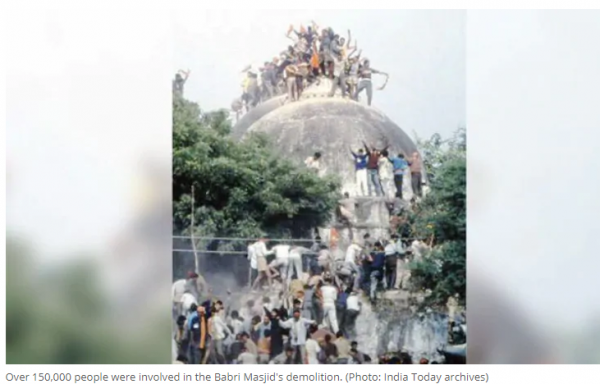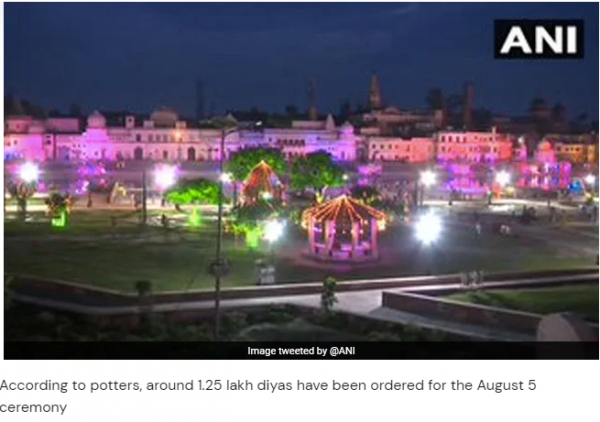Humanity Has Hit a New Low: Fake Vaccination Drives Conducted Around Cities Like Kolkata and Mumbai
- 29-06-2021
- News

Ayodhya, the birthplace of Lord Rama, is gearing itself in full swing for the grand occasion of bhoomi pujan or ground-laying ceremony for the Ram temple (Ram Janmabhoomi Mandir or Ram Mandir) on August 5. The PM’s decision to attend this event in person and Uttar Pradesh Chief Minister Yogi Adityanath’s faith that ‘Bhoomi Pujan will bring an end to the 500-year-old long struggle and wait of devotees’; makes us delve a bit deeper into the antiquity of this holy place.
What was the Ram Janmabhoomi - Babri Masjid dispute?
Ram Mandir is a matter of deep faith not only for the people of Ayodhya but for Hindus living all across the world; it being built on the place of birth of one of their most revered deities, Lord Ram, the seventh incarnation of Lord Vishnu. Muslims on the other hand have worshipped here for generations, until the early 1990s, in their mosque called ‘Babri Masjid’ built by the Mughal emperor Babur and his general Mir Baqi in 1529. Many Hindus however believe that Babri Masjid was actually constructed on the ruins of a Hindu temple that was demolished by Muslim invaders in the 16th Century, and hence the dipute.
What is the history of dispute? – Pre-Demolition
During the British rule, after protests on the illegality of structure, Hindus were allowed to perform puja, a Hindu form of worship, outside the disputed site. Soon after Independence, in 1949, Hindu activists entered the mosque building and placed the idols of Lord Rama and Lakshmana under the dome between the mosques.
Since then, there was a demand to build a temple on that spot and Ram Mandir became a major political agenda in 1980s with the Vishwa Hindu Parishad (VHP) and Bhartiya Janta Part (BJP) initiating a nation-wide campaign to gather public support for access of mosque to Hindus. In 1986, a Faizabad district judge ordered the gates of the Babri Masjid to be opened in favor of Hindu parties, and allowed worship. The then Rajiv Gandhi government was accused of double appeasement - to appease the Muslim fraternity in Shah Bano's case and to appease the Hindus by opening locks in the Babri case.
On 25 September 1990, senior BJP leader LK Advani started his Rath Yatra which ran from Somnath in Gujarat to Ayodhya in Uttar Pradesh to mobilize nationwide support for the temple. The game of religion and politics was at its peak in Uttar Pradesh and BJP presented itself as a Hindu party whereas Mulayam Singh and then Bihar Chief Minister Lalu Prasad Yadav presented themselves as the messiah of Muslims.
However, the assassination of former Prime Minister Rajiv Gandhi during an election rally in in 1991 gave Congress the benefit of sympathy votes and it was able to form the government with the help of its allies. However, owing to its Ram Mandir campaign, BJP came to power in Uttar Pradesh with Kalyan Singh as Chief Minister during whose tenure, on December 6 1992, some Hindu Karsevaks tore down the Masjid structure sparking riots that killed nearly 2,000 people.
Some critics argue that demolition of the Babri Masjid was the turning point in Hindu-Muslim relations and religion based politics in the country.

What is the history of dispute? – Post-Demolition
India being the world’s largest democracy, the matter didn’t end there. Since then, building a new temple dedicated to Lord Ram on the site of the mosque in Ayodhya has been a part of BJP’s election manifesto and owing to that it even managed to come to power during 1996 and 1999 garnering support of Hindu voters. BJP kept its future bright through constant politicization of Ram Mandir matter which now became more an issue of politics and glory than faith and legitimacy.
There have been several legal battles over the site, the courts had to intervene and the access to holy site had to be restricted. Three main contending parties - two Hindu groups and the Muslim Waqf Board, which is responsible for the maintenance of Islamic properties in India, filed a title dispute in the Allahabad High Court in 2002. In September 2010, the court ruled that the site should be split equally into three parts, with the Muslim community getting control of a third, Hindus another third and the Nirmohi Akhara sect the remainder. Both Hindu and Muslim groups challenged the verdict in Supreme Court which suspended this ruling in 2011.
The Final Verdict
Ever since the Narendra Modi-led BJP government came to power in 2014, Ram Mandir issue again grabbed attention and headlines, it being one of their major point in election campaign. In March 2019, the Supreme Court appointed a three-member panel for mediation between the parties but in vain. A five-judge Supreme Court bench heard the title dispute cases from August to October 2019.
On November 9, 2019 the constitution bench permitted construction of a temple at the site where the Babri Masjid once stood in Ayodhya, citing a report by the Archaeological Survey of India (ASI) as evidence. The unanimous verdict ordered the disputed land to be handed over to a trust (to be created by Government of India) to build the Ram Mandir while Muslims to be given land elsewhere to construct a mosque. However, the court also added that the demolition of the Babri Masjid was against the rule of law.
The main group of Muslim litigants decided not to appeal against the verdict. On December 12, 2019, all petitions seeking review of the verdict were dismissed by the Supreme Court, thus ending the long going legal battles on this matter, be it title suit, criminal proceeding in the case of mosque demolition, even an appeal regarding the existence of Ram and Ram Mandir.

Post-Verdict Scenerio
The date of August 5, 200 has been chosen for the ground laying ceremony of Ram temple in Ayodhya, one year after the controversial decision to abolish Article 370 from Jammu and Kashmir on August 5, 2019. People are waiting eagerly to witness this historic moment and the entire city is being decorated with diyas and lights ahead of the grand ceremony which is the first step in construction of long awaited Ram Mandir.